Changing the narrative: How this Churchill Downs vet is making horse racing safer for all
- Oops!Something went wrong.Please try again later.
LOUISVILLE, Ky. — On a recent chilly morning on the backside at Churchill Downs, Dr. William Farmer looks over thoroughbred Curlin Lane.
A downpour the night before has turned the famed track into a muddy slog, but the cold doesn't bother Farmer as he looks over the horse, his fingers caked with mud.
It's a normal morning for Farmer, the equine medical director at the historic racetrack.
And if anyone is accustomed to taking on a mess, it’s him.
Farmer, who is known simply as Will around the track, was hired in 2019 by Churchill Downs to develop, direct and enforce new equine health and safety of training and racing horses at Churchill Downs, Inc. in an attempt to decrease the number of horse injuries and fatalities.
In 2018, 16 horses died at Churchill Downs' properties, according to the Equine Injury Database, an average of 2.73 horses out of every 1,000 starts. The national average that same year was 1.68 horses per every 1,000 starts.
Increased scrutiny around the health and safety of the jockeys and thoroughbreds who partake in the sport keeps mounting, especially in light of the recent death of former Kentucky Derby winner, Medina Spirit, who was stripped of his crown after a doping scandal involving trainer Bob Baffert.
However, safety has been an ongoing issue in the sport, even before Baffert and Medina Spirit.
During a five-year period at Santa Anita Park in California, 232 racing and training horses died during 44,475 starts, an overage of 5.2 deaths per every 1,000 starts, according to the Equine Injury Database.
Last year, six horses died at Churchill Downs, an average of 1.08 for every 1,000 starts. The national average in 2021 was 1.39 — the lowest it's been since the EID began compiling statistics in 2009.
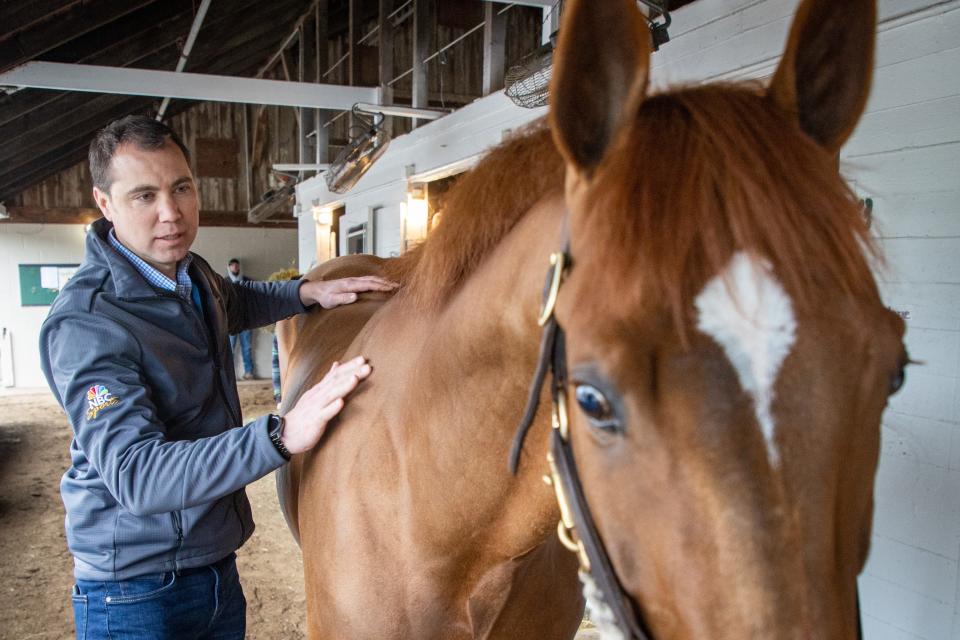
Backside: How this young Latina woman is paying it forward on the backside at Churchill Downs
Horse racing's answer to safety might just be someone like Farmer. At its core, his job is to make everything safer. And he's already making an impact. Farmer and his team of veterinarians do this by completing a series of additional health and safety tests and exams on each horse prior to racing.
"Churchill has always been very proactive in equine safety here and at all of their properties," Farmer, a native of Indiana, told the Courier Journal. "When I came into this role ... we were creating something new. It's been a very fun challenge to kind of make it my own."
But how Farmer and his team are making those changes on the backside at tracks owned by Churchill Downs isn't an overnight solution.
A day in the life at Churchill Downs' Backside
Farmer was introduced to veterinary medicine in 2008, the same time that his wife was completing dental school at the University of Louisville. He previously worked as a state veterinarian with the Kentucky Horse Racing Commission from 2008-to 2016 and was the official veterinarian for the California Horse Racing Board, as well as a consulting veterinarian for the Breeders' Cup.
"There are many similarities between my previous roles as a state veterinarian with the Kentucky Horse Racing Commission and my current role," Farmer said. "Ultimately the two positions have the same goal — to protect the welfare and safety of those horses at our tracks."
Farmer works closely with the KHRC veterinarians to monitor and enforce various safety protocols put in place both by state regulation and as 'house rules,' at various Churchill Downs' properties, including Fair Grounds Racecourse in New Orleans, Louisiana, Ocean Downs in Ocean City, Maryland, Oak Grove Racing in Oak Grove, Kentucky, Turfway Park in Florence, Kentucky and others.
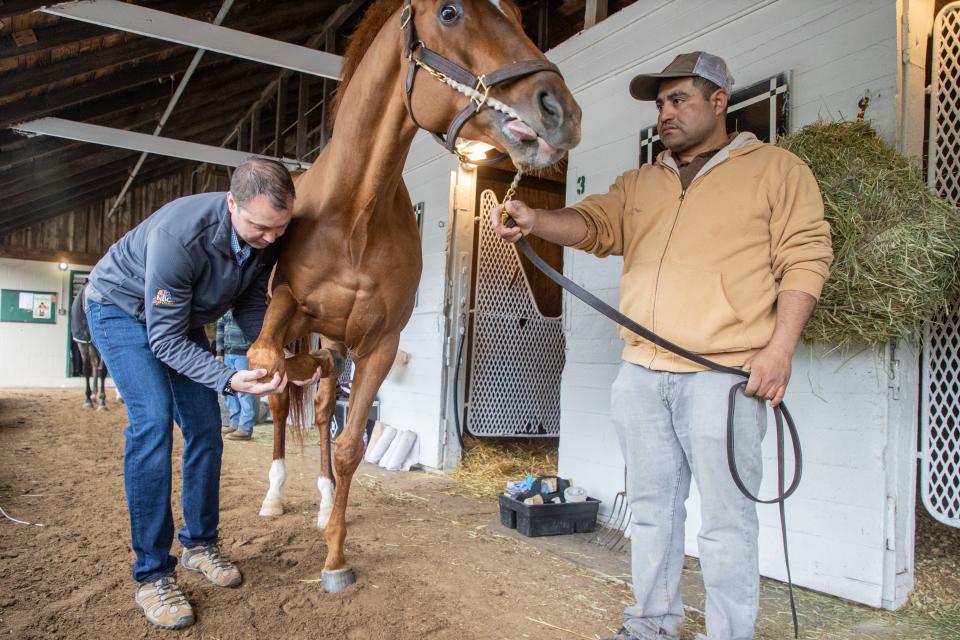
Regardless of location, each physical exam is the same, consisting of bending, extending and flexing each of the horse's limbs at the barn and checking for any stiffness or pain. Manipulations of the chest, neck, face and mouth are a part of the routine, too. Farmer also looks for any irregularities that might result in a horse being scratched from racing.
"All Oaks and Derby horses will have multiple physical exams performed in the week leading up to the race," Farmer said, "Which consists of general observation of the horse’s appearance and attitude along with palpation of the horses' legs to feel for any changes from the normal anatomy."
Kentucky Derby news: NBC Sports’ Kentucky Derby coverage includes Rebecca Lowe reporting from Churchill Downs
New safety protocols at Churchill Downs also include pre-entry examinations by Kentucky Horse Racing Commission veterinarians three days before racing; pre-workout examinations completed by a veterinarian within five days preceding a timed workout; and required examinations for horses that haven't raced for an extended period of time.
"If, during the course of the pre-race examination any issue is identified that could put the horse at risk of injury during the race, the horse is scratched from the race," Farmer told The Courier Journal. "Approximately two out of every 100 horses entered to race is scratched due to pre-race veterinary concerns."
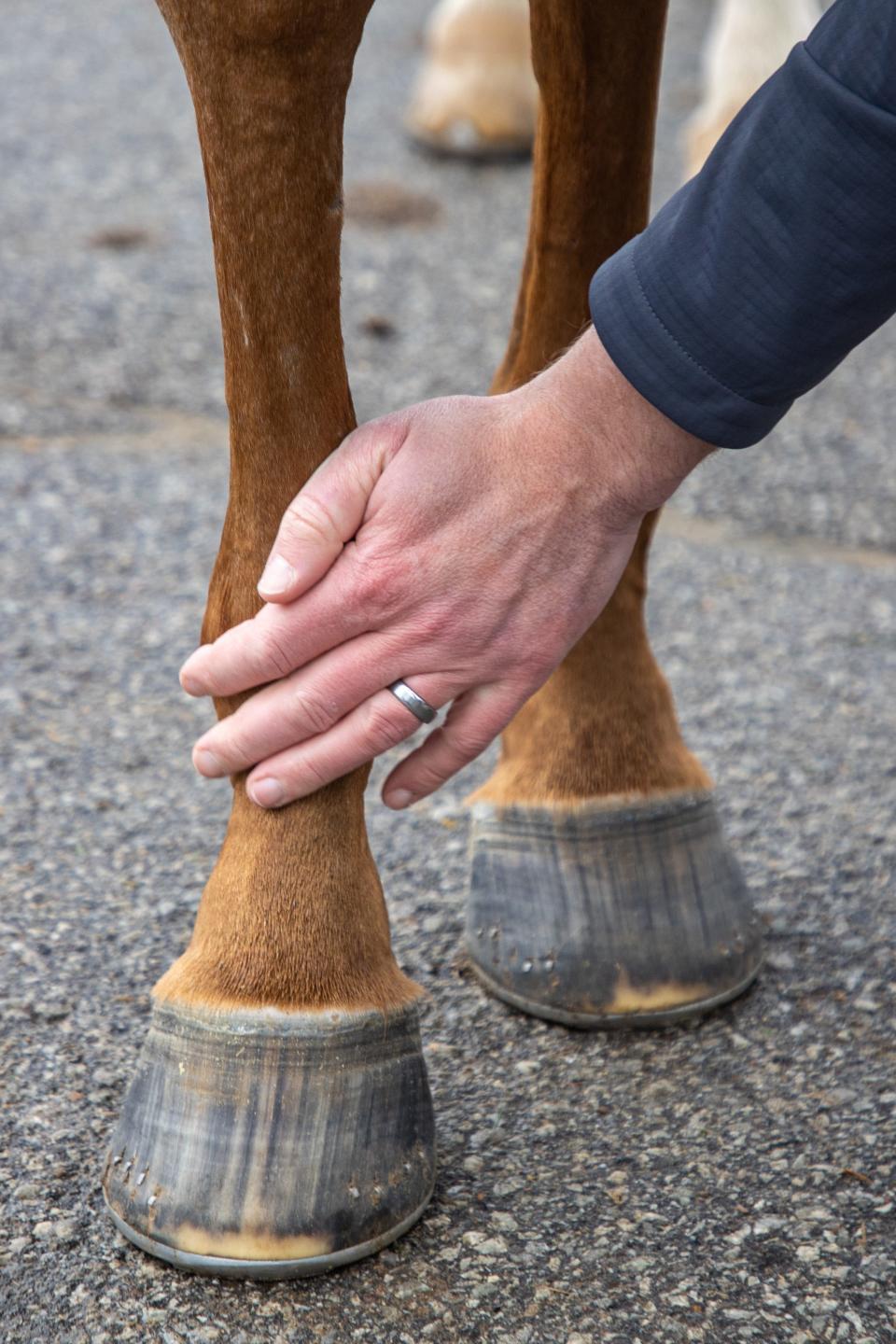
Any horse removed due to veterinary concerns must undergo a thorough veterinary work-up to ensure it is healthy prior to be able to return to racing, he added.
A good portion of Farmer's health and safety role also includes drug testing each horse and screening 1,500 samples of different medications and banned substances, including the diuretic Lasix, which is banned for 2-year-olds and during stakes races but is otherwise allowed.
Lasix, also known as furosemide, an anti-bleeding medication, is used by veterinarians in horse racing to prevent respiratory bleeding in horses that are running at high speed. Blood entering the lungs during high physical activity can cause a pulmonary hemorrhage and result in death.
"Racehorse safety and welfare is the driving force in my career," Farmer said. "In a world where we have sensors in nearly every device we touch, the ability to adapt sensors to be able to collect objective data to improve horse safety is an open door."
You may like: First footage: Groundbreaking silent film shows the Kentucky Derby as it was 100 years ago
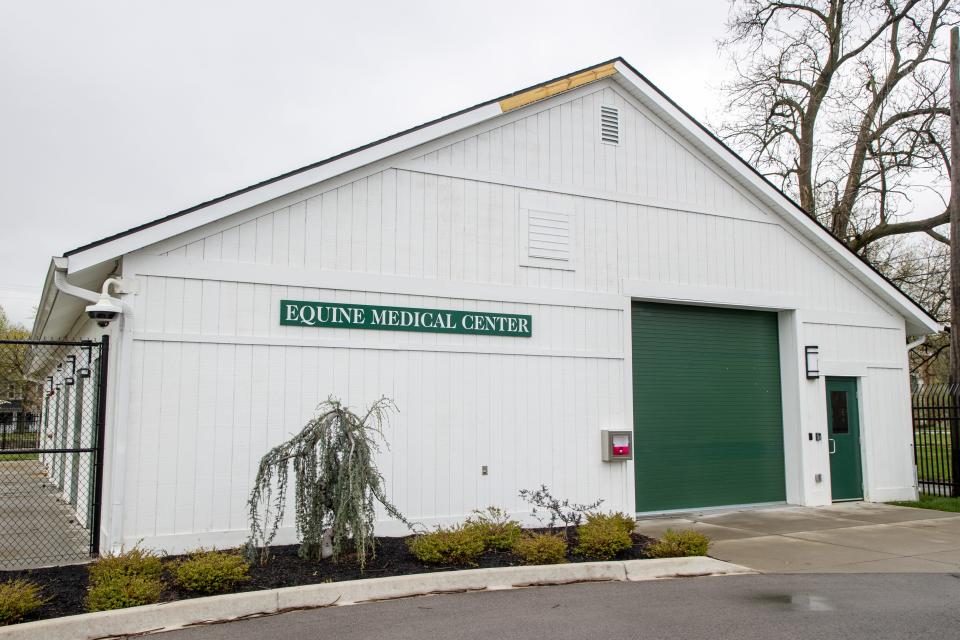
Farmer said the changes in place now are just the beginning.
"Looking forward, I am very excited to see the potential this type of data may have in developing additional protocols to keep our horses even safer," he said.
Ensuring safety in horse racing, Kentucky Derby
South Louisville native and thoroughbred horse trainer Dale Romans, just the second trainer in Churchill Downs history to record 700 career victories at the iconic track, said Farmer has already made a huge impact on the sport since 2019.
"We've got to do everything we can to keep the animals safe and the riders safe," Romans said. "And I think it's been very, very successful. Dr. Farmer uses other things besides just exam statistics on which horses are most likely to have a physical issue, and ... which ones haven't trained the right ways or haven't run in a long time."
Another new policy at Churchill Downs — each trainer, like Romans, is also required to sign a contract, known as the CDI Rules of Racing and Training agreement, that outlines the rules of the equine safety and welfare program, including specific veterinary exam requirements for horses participating in either a high-speed exercise or entering a race.
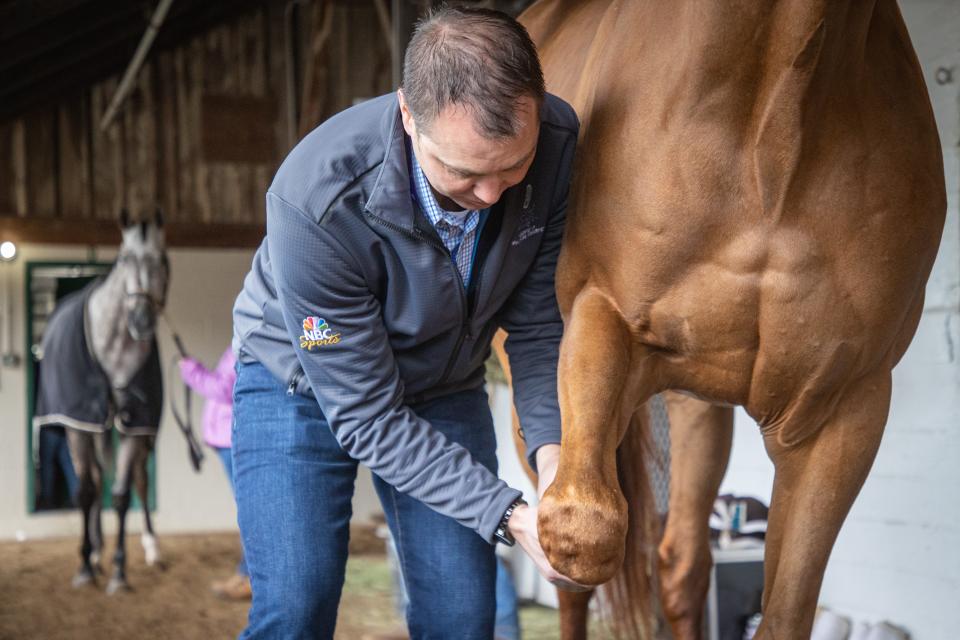
Having full-time veterinarians on-site, providing full-time dental care for the horses and having a full-time blacksmith readily accessible, along with these new safety procedures, can prevent a bad situation from becoming worse, Romans said.
What people don't realize, he added, is that "horses breakdown on the racetrack almost at the same rate that they break legs and stuff out in fields or running wild.
"We can always go to [Farmer] and ask for advice, or have him look at a horse or help us," Romans said. "Nobody wants to see a horse get hurt."
A reimagined paddock: Churchill Downs reveals potential $200 million redevelopment project
Those "extra" examinations are there to ensure the health and safety of the thoroughbreds and also potentially prevent horses from being scratched from a race.
"I have had to make that call of scratching a horse out of the Kentucky Derby. It is not something that is fun to do," Farmer said. "At the end of the day, the safety and the welfare of the racehorse is paramount. If there is anything that we feel ... would potentially compromise a horse and make it unsafe on the racetrack, we recommend ... a horse be scratched from the race."
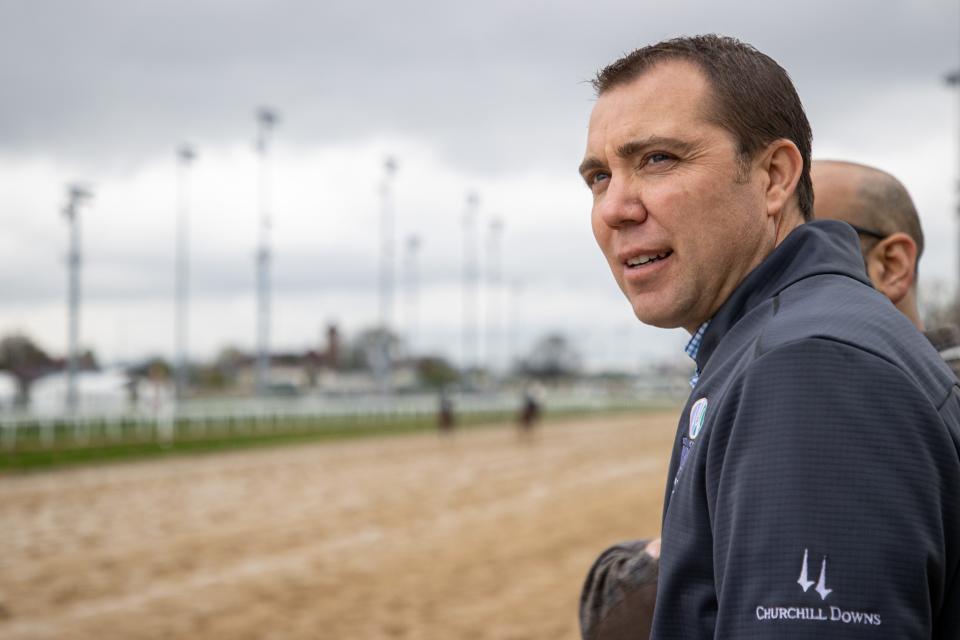
It all goes back to safety and changing the narrative around the sport.
"Many times, stories about our sport are negative in nature," Farmer said. "While this is an important driving force in my career to continue being a better advocate for the horse, there are many more amazing stories of the people’s lives touched and empowered by these amazing athletes both during their racing careers and a second career away from the racetrack."
With around 500 horses competing in races at Churchill Downs during Kentucky Derby Week, Farmer has his work cut out for him. But he's hoping it's an "average" week.
"Hopefully [I'm] not busy at all," he said. "If I'm bored, that means it was a great day."
Culture and diversity reporter Jason Gonzalez can be reached at jgonzalez1@gannett.com.
This article originally appeared on Louisville Courier Journal: Meet the man making horse racing safer, at Churchill Downs, Derby

